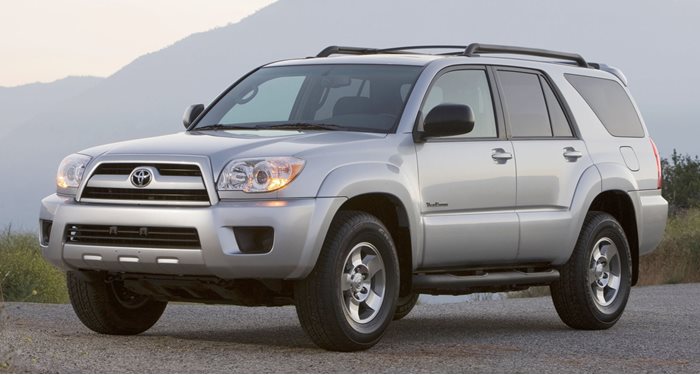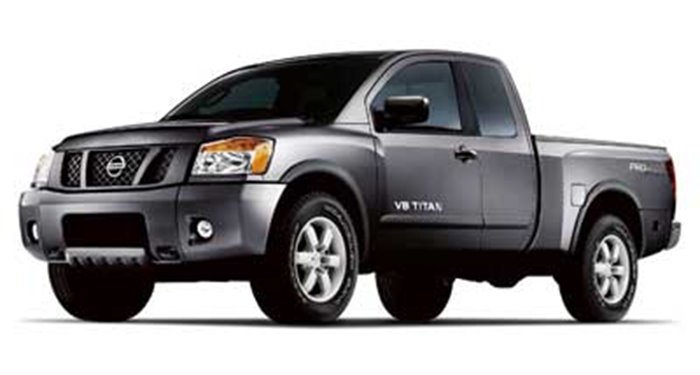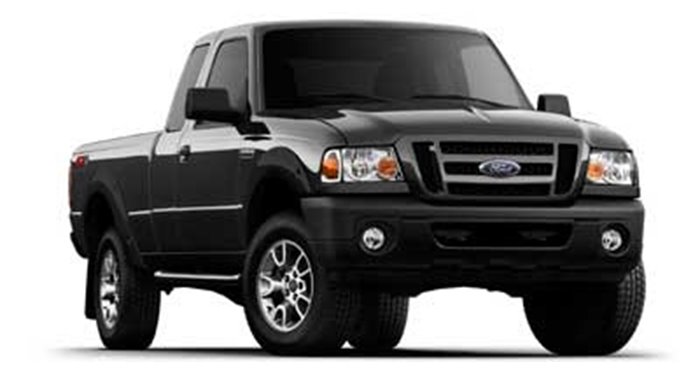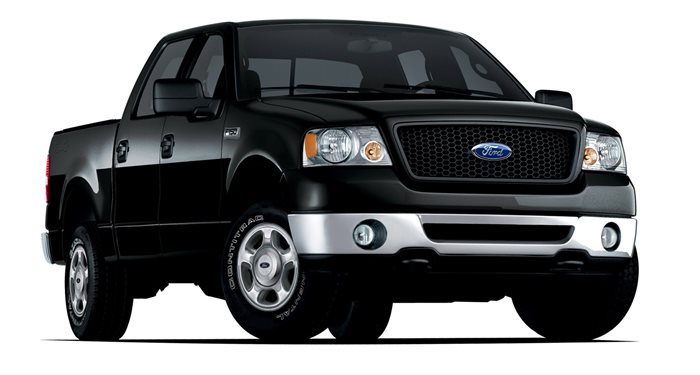The 3RZ-FE 2.7-liter engine is an old-school iron-block design but with modern touches like a 16-valve DOHC cylinder head and electronic fuel injection. It has no clearance-compensating hydraulic lifters, so valve clearances have to be adjusted every 25,000-30,000 miles; it's not an easy DIY job, as it requires a specific tool. Don't skip it, because as the valve lash decreases over time, the exhaust valves may not close fully, leading to burnt valves if ignored. It is a heavy-duty engine primarily designed for commercial applications, so it boasts both a forged crankshaft and connecting rods for toughness and piston oil squirters for better cylinder cooling. The engine is extremely durable and can survive some neglect, although this is never recommended. As such, 1995-2004 Toyota Tacoma engine problems are few and far between and essentially amount to the type of nit-picking that would be the envy of other manufacturers.
The serpentine auxiliary drive belt can wear out by 80,000 miles, and when it starts to slip, it makes squeaking noises. It can be the tensioner, but it's usually the belt. Replace both anyway. Replace the water pump at the same time, because it runs off this belt and may be prone to failure, although this happens mostly in hard-driven vehicles. Look out for coolant leaking from the water pump's weep hole - a sure sign that it must be replaced without delay.
The 2.7-liter 3RZ-FE is the only engine in this engine family with twin balancer shafts to achieve smoother running, and these balancer shafts' bearings can fail. It is not a very common problem, but it does happen from time to time, to the extent that there are actually a few suppliers out there selling balancer-shaft delete kits. The engine can run without these shafts, but it will be quite rough due to the fact that it's large displacement for a four-pot. However, it gives an engine with plenty of miles in it yet a fresh lease on life, even if the balancer-shaft bearings are tired.
The timing chain on the 3RZ-FE is not particularly prone to failure, it's just that with the generally high standards of the durability of this engine, a timing chain lasting "only" 150,000 miles is not that great. Replace the chain, guides, and tensioner at the first sign of wear, usually announced by a faint rattle getting more intense over time, eventually throwing off the engine's timing and potentially wrecking the engine if it is ignored and jumps teeth. Check the chain regularly once it's 100,000 miles old to stay ahead of trouble, because you don't want to wait until it fails. That being said, an RZ treated like a baby and given fresh oil frequently can see that chain reach 200,000 miles, which is decent going.
On the 2.4-liter 2RZ engine, even less can go wrong because it lacks the 3RZ's balancer shafts. As for the other potential problems, they are mostly as per 3RZ. An RZ engine will easily last 250,000 miles or more if properly looked after.
Mileage: Auxiliary drive belt starts to wear out from 80,000-100,000 miles. Replace the timing chain every 150,000 miles to be safe. Water pumps usually last 150,000 miles but can occasionally fail at half that distance, so keep an eye on water leaks. Some are on record lasting well over 250,000 miles, though. Balancer-shaft failure on the 2.7 isn't too common and a bit random, not necessarily connected to mileage. Valve clearances have to be adjusted every 25,000-40,000 miles.
Cost: A balancer-shaft delete kit costs only about $100 before labor.
How to spot: An auxiliary drive or tensioner at the end of its life will slacken off and start to slip, emitting squeaking sounds. If it snaps, the power steering, air-conditioning, and alternator will stop working, the last of these triggering the no-charge warning light, which should not be ignored, because the water pump also stops working, and if you continue driving, the engine will overheat. Timing-chain failure will cause rattling and poor performance and economy, as well as misfires. If ignored, it will leave metal shavings in the oil, potentially causing major damage or failing altogether, ruining the engine. A failing water pump will make a whining noise and emit coolant through its weeping hole until the engine overheats if it's ignored. Excessive valve clearances will cause ticking noises and exhaust valves that don't close fully, causing a lack of power, misfires, a smoky exhaust, and eventually, burnt valves. Balancer-shaft failure results in misfires, rough running, and lots of vibration.















 Acura
Acura
 Alfa Romeo
Alfa Romeo
 Aston Martin
Aston Martin
 Audi
Audi
 Automobili Pininfarina
Automobili Pininfarina
 Bentley
Bentley
 BMW
BMW
 Bollinger
Bollinger
 BrightDrop
BrightDrop
 Bugatti
Bugatti
 Buick
Buick
 Cadillac
Cadillac
 Caterham
Caterham
 Chevrolet
Chevrolet
 Chrysler
Chrysler
 Dodge
Dodge
 Ferrari
Ferrari
 Fiat
Fiat
 Fisker
Fisker
 Ford
Ford
 Genesis
Genesis
 GMC
GMC
 Gordon Murray Automotive
Gordon Murray Automotive
 Hennessey
Hennessey
 Honda
Honda
 Hyundai
Hyundai
 Ineos Automotive
Ineos Automotive
 Infiniti
Infiniti
 Jaguar
Jaguar
 Jeep
Jeep
 Karma
Karma
 Kia
Kia
 Koenigsegg
Koenigsegg
 Lamborghini
Lamborghini
 Land Rover
Land Rover
 Lexus
Lexus
 Lincoln
Lincoln
 Lordstown
Lordstown
 Lotus
Lotus
 Lucid Motors
Lucid Motors
 Maserati
Maserati
 Mazda
Mazda
 McLaren
McLaren
 Mercedes-Benz
Mercedes-Benz
 Mini
Mini
 Mitsubishi
Mitsubishi
 Nissan
Nissan
 Pagani
Pagani
 Polestar
Polestar
 Porsche
Porsche
 Ram
Ram
 Rimac
Rimac
 Rivian
Rivian
 Rolls-Royce
Rolls-Royce
 Spyker
Spyker
 Subaru
Subaru
 Tesla
Tesla
 Toyota
Toyota
 VinFast
VinFast
 Volkswagen
Volkswagen
 Volvo
Volvo